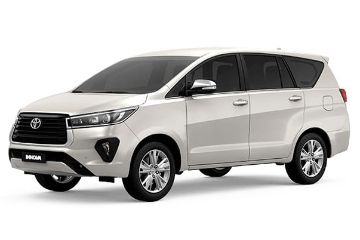![What else can you get for ₱1.8M? Top 5 Geely Okavango alternatives 01]()
The Geely Okavango (Specs | News), when it first launched, took the market by storm thanks to its affordable pricing, space, style, and features. It was a good mix of SUV-like looks, MPV-like versatility, and crossover dynamics all rolled into one with its competitive feature set.
After all, it was the follow-up model after the Geely Coolray (Specs | News), so the automaker had to come up with something big. The automaker even bumped up the power from the 1.5-liter motor of the Coolray and added a mild hybrid system to give it 190 PS and 300 Nm of torque.
When it first launched, it had a price tag hovering around the 1.5 million mark, which bridged the gap between those looking for an SUV but only had a budget for a subcompact MPV.
However, Geely Philippines has since increased its pricing bringing it closer to SUVs with its new ₱1.8 million price tag for its Urban Plus model.
With that in mind, we have created a list of alternative vehicles you can buy instead of the Geely Okavango for the same amount. For this list, we will only include our top 5 seven seater cars within ₱100,000 of Okavango’s SRP to keep things fair.
Toyota Innova V AT (₱1,784,000)
![What else can you get for ₱1.8M? Top 5 Geely Okavango alternatives 01]()
We aren’t talking about the all-new 2023 Toyota Innova hybrid here but its diesel counterpart. For the same price as a top-spec Geely Okavango, you can get yourself a Toyota Innova V. Sure, it is about ₱20,000 more expensive than its Geely rival, but you do get an infotainment system that comes with Apple CarPlay and Android Auto.
You also get a powerful yet fuel-efficient 2.8-liter turbo diesel motor. It may not have all the fancy features, but you get a tried and tested platform. However, its turbodiesel engine produces 170 PS and 343 Nm of torque with a six-speed automatic.
Toyota Fortuner G AT (₱1,828,000)
![What else can you get for ₱1.8M? Top 5 Geely Okavango alternatives 02]()
Look for ₱1.8 million, and you can get yourself an automatic base model Toyota Fortuner (Specs | News) G. We know you won’t get many of the fancy features available in the Okavango. Still, you will get a tried and tested platform and a frugal 2.4-liter turbo diesel engine. Its turbodiesel produces 150 PS and 400 Nm of torque.
It also has a 7-inch infotainment system with Apple CarPlay and Android Auto support. For ease of parking, it has a reverse camera paired with clearance and back sonar.
Mitsubishi Montero Sport GLS AT (₱1,796,000)
![What else can you get for ₱1.8M? Top 5 Geely Okavango alternatives 03]()
You may not be able to get the GT model, but the Mitsubishi Montero Sport (Specs | News) GLS is within the same price bracket as the top-spec Geely Okavango.
The Japanese SUV offers a familiar platform paired with decent power from its 2.4-liter turbodiesel engine. It may not come with the Okavango, but it has the right technology to entertain you. The turbo diesel makes 180 PS and 430 Nm of torque.
It has an 8-inch infotainment system that supports Apple CarPlay CarPlay and Android Auto, along with a 220V socket. The GLS model also has a multi-around monitor to aid you in parking.
Nissan Terra VE (₱1,889,000)
![What else can you get for ₱1.8M? Top 5 Geely Okavango alternatives 04]()
The Nissan Terra (Specs | News) VE is more expensive than the top-spec Geely Okavango. You get a 2.5-liter turbo diesel engine and a decent feature set. The turbo diesel produces 190 PS and 450 Nm of torque.
You also get an 8-inch infotainment system with Apple CarPlay and Android Auto connectivity. It also receives the Nissan Intelligent Mobility safety suite of features that gives it access to an intelligent rear-view mirror, emergency braking, lane departure warning, and forward collision warning.
Isuzu mu-X RZ4E LS-A MT ( ₱1,815,000)
![What else can you get for ₱1.8M? Top 5 Geely Okavango alternatives 05]()
For the Isuzu mu-X (Specs | News), you can get the 1.9-liter turbodiesel engine in the LS-A MT trim. We understand that it's not an automatic transmission model. However, you must pay over ₱1.9 million to get the closest variant with the 3.0-liter motor and an automatic gearbox.
That being said, you get less power at 150 PS and 350 Nm of torque and a six-speed manual transmission. However, you do get a reverse camera along with reverse sensors. You also receive a 10.1-inch infotainment system supporting Apple CarPlay and Android Auto.
Disclaimer: These prices are subject to change and may different from what is currently available versus what was written during press time.











